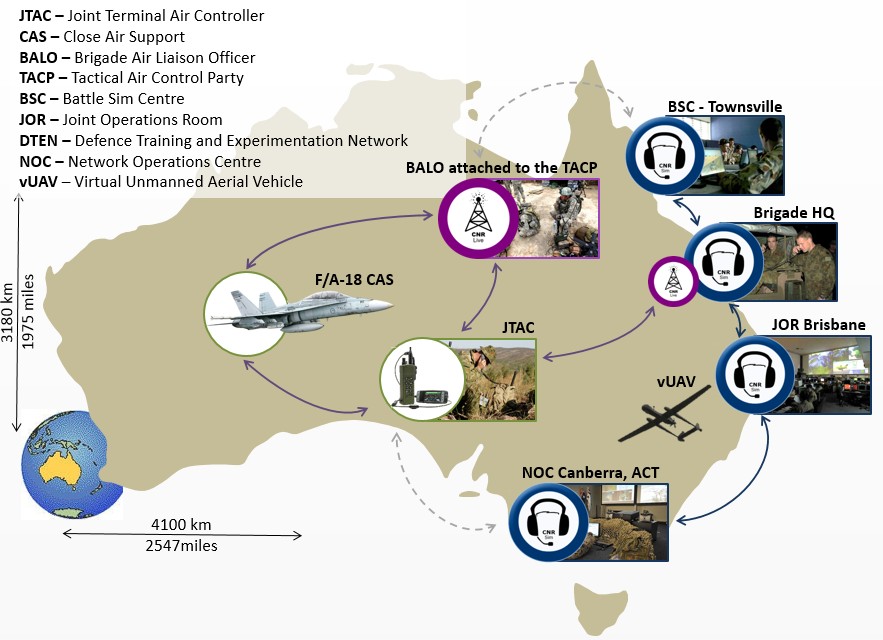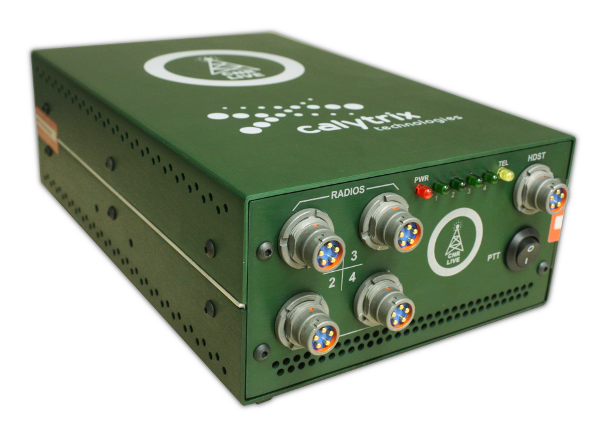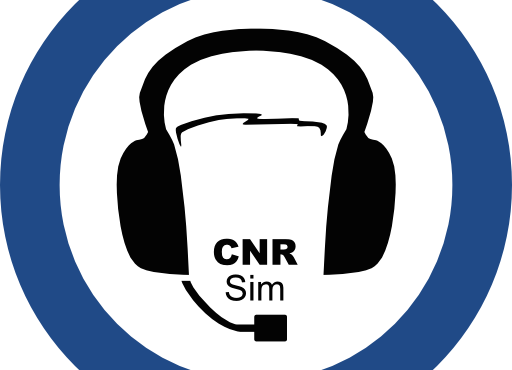Adding the L to LVC Communications
As the line between live, virtual and constructive training systems blur there is an ever increasing need to integrate the real and simulated radio networks.
CNR-Live provides a solution to connecting real radios into a CNR virtual radio network.
USE CASE: 1,100 miles, Seven Training Sites and 1 integrated LVC Radio Net

The following use case demonstrates the requirement for the integration of simulated and live radios within the one training environment. Increasingly, the integration of numerous live personnel and assets supplemented by constructive and virtual capabilities demands that radio communications are also able to operate in real time between the live and virtual domains.
Both CNR-Sim and CNR-Live provided critical communications support during the Australian Defence Force's Pozieres Prospect 13 exercise. Described, at the time, as the ‘single largest and most complex simulation enabled, C2 Integrated event ever delivered in Australia’.
Spanning some 1,100 miles (1,800 kilometres) the exercise’s communications architecture needed to incorporate deployed live radios, ground to air communications, remote simulation interactors as well as headquarters and simulation control elements:
Joint Terminal Air Controllers (JTACs) in the field used live radios to talk to assigned aircraft and the HQ elements as well as to Virtual UAV operators located back in a simulation center. The Brigade Air Liaison Officer (BALO) was deployed in the field with the Brigade HQ and used a radio connected to a CNR-Live box to manage the BDE air space, and deliver Time Sensitive Targeting (TST) information to the remote Air Force simulation interactors.
All of the radio traffic (live and simulated) was logged and recorded from the Network Operations Centre (NOC) located well south of the exercise. For the first time on this type of exercise, Headquarters Joint Operations Command was also able to monitor live radio traffic from an exercise which was occurring two States and 1,100 miles to the north.

This exercise highlighted the value of being able to ‘virtually co-locate’ various manoeuvre elements which would normally operate in proximity to each other. The challenge for this type of simulated event is to be able to replicate the level of communications expected when these elements would normally be geographically close.
Within this exercise, the Amphibious Task Group (ATG) used 45 laptops with CNR-Sim to coordinate actions between the Joint Operations Room (JOR), the Ship-to-Objective Manoeuvre (STOM) cell and the simulation interactors over a Wide Area Network (WAN). At the same time an Army Brigade was using CNR-Sim for each of the Battle Groups in the simulation centre, as an alternative to using real radios; ensuring that radio communications precisely replicated the scenario being conducted. All communication was logged and available for AAR.

